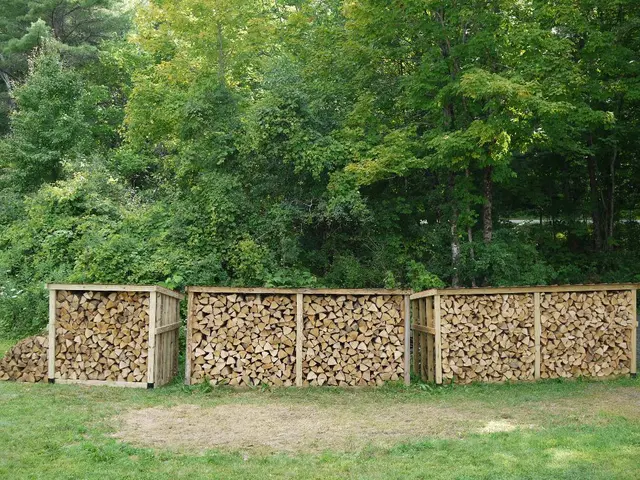If you consider trimming or removing the roots of your neighbor's tree that resides in your property, legal advisors and gardening experts offer guidance and shed light on situations where you could potentially be violating the law.
In the realm of homeownership, tree root disputes can often lead to neighbourly disagreements. However, with clear communication, understanding of local regulations, and a cautious approach, these issues can be resolved amicably.
Katie, a homeowner, recently found herself in such a situation. She recommends calling professionals for large tree pruning jobs, but for smaller tasks, a mini-chainsaw like the Saker electric mini-chainsaw can be used.
In Katie's case, she discovered that the roots of a tree shared with her neighbour were encroaching on her property. It is important to note that you are generally allowed to cut or prune the roots of your neighbour's tree that are encroaching on your property, but only up to your property line and without causing significant harm to the tree.
Before taking any action, Katie made sure to communicate with her neighbour. This open dialogue was appreciated by her neighbour, who was grateful for the discussion about potential tree root trimming before fence installation.
However, removing tree roots could potentially damage the tree, which may be considered a tree pruning mistake that could lead to liability for damage and replacement. Therefore, it is advisable to consult a professional arborist if the roots are large or risk harming the health or stability of the tree.
Legally, you can only prune roots from your side of the boundary without crossing it into your neighbour’s land, and you must not cause damage that kills the tree, as this can lead to legal claims.
To maintain a good relationship and avoid legal issues, it is important to:
- Communicate with your neighbour before cutting roots; they might be unaware and willing to cooperate.
- Check local regulations and whether the tree has protections such as a Tree Preservation Order (TPO) or is in a conservation area, which may require official permits or notification before any work.
- Avoid disturbing wildlife habitats protected by law (e.g., nesting birds, bats) when performing root pruning.
In Katie's case, she and her neighbour agreed on a joint action plan, forming a document regarding the need to possibly trim roots back, which was signed by both parties. This document stated that if any large roots or those in an area where damage could occur were encountered during fence installation, both parties would be consulted prior to continuing.
Moreover, it is advisable to check with your local jurisdiction before trimming back the roots of a tree on your property that belongs to your neighbour. Most jurisdictions allow a landowner to trim or cut tree roots from a neighbour's tree that are encroaching on their land, as long as the health of the tree is not in jeopardy.
Eastern redbuds do not tend to produce shallow surface roots, while invasive trees like Bradford pears are known to produce problematic roots that snake along the surface of the soil. Smaller roots, under an inch or two in diameter, can be chopped back using a pruning saw.
In conclusion, trim roots solely on your property, communicate openly with your neighbour, confirm any legal protections or permits needed, and proceed cautiously to avoid harming the tree or violating regulations. This approach balances your right to manage encroaching roots with legal compliance and neighbourly goodwill.
Furthermore, a calm chat over a cup of coffee might help to quickly resolve any confusion. The neighbour mentioned they would be doing future work and would talk to the homeowner if trees on the lot were affected. The interaction set both parties up for open communication in the future about any changes to their yards.
[1] Tree Pruning Mistakes: What Not to Do [2] Tree Roots: What You Need to Know [3] Can I Trim My Neighbor's Tree? [4] Tree Pruning: How to Remove Tree Roots [5] Tree Pruning: When to Call a Professional
- In light of her previous experience with the encroaching roots from her neighbour's tree, Katie recommends exploring home-and-garden magazines or websites for garden ideas to choose trees with minimal surface root issues, like the Eastern redbud, to minimize future disputes related to shared trees.
- Maintaining a good lifestyle includes acknowledging the importance of a harmonious neighbourhood. As such, Katie advises that each homeowner should be mindful of their gardening practices and ensure they abide by local regulations and consult with professionals when necessary, to ensure that any tree pruning jobs are carried out responsibly and respectfully towards their neighbours.




